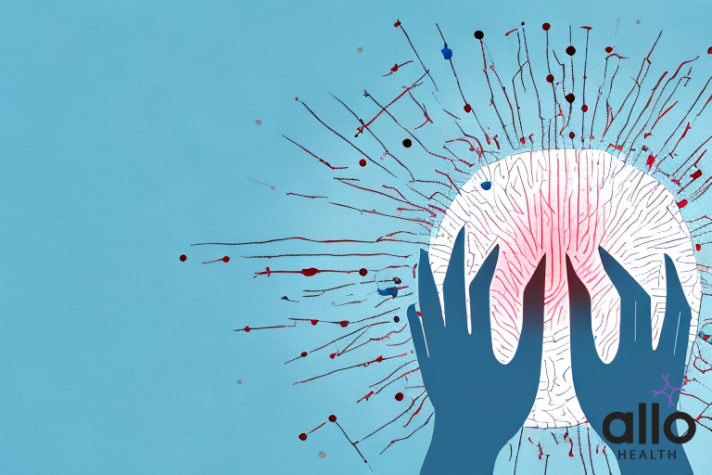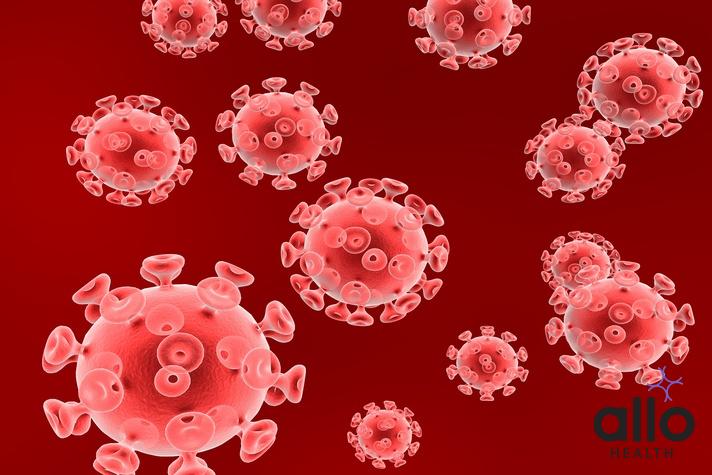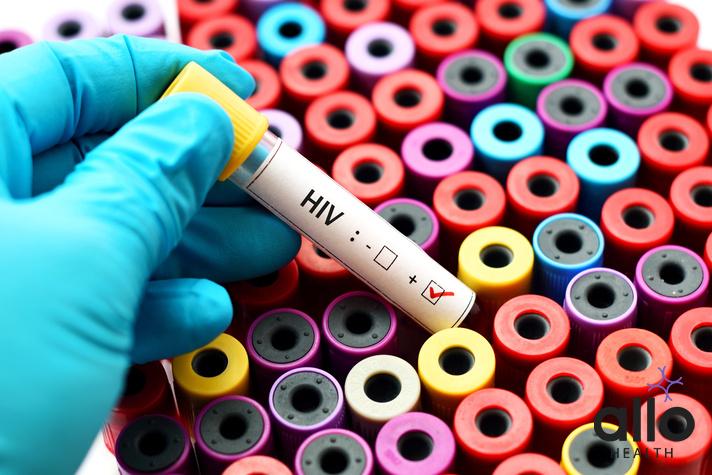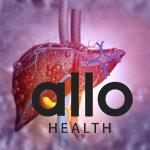HIV Transmission Through Nail Scratch: Is It True?

Allo Health is dedicated to personalized well-being, offering support and trusted information tailored to individual health goals. The platform emphasizes human-generated content, led by a distinguished medical team of experts, including physicians and sexual health specialists. Their commitment to credibility involves rigorous fact-checking, authoritative research, and continuous updates to ensure accurate, up-to-date information. Allo Health's unique approach goes beyond conventional platforms, providing expert-led insights and a continuous commitment to excellence, with user feedback playing a crucial role in shaping the platform's authoritative voice.

Dr Sandip completed his training in Psychiatry and sexual medicine in the UK. A post-graduate in Psychiatry from KMC Manipal, he worked in the UK for over 8 years following a one-year research post at NIMHANS, Bangalore. With an interest in the fields of sexual health and functioning, he has authored articles in books and peer-reviewed journals. A recipient of the student of the year award by BSART in 2010, he is currently a consultant psychiatrist and sexual and relationship therapist with a belief in a holistic and psychotherapeutic approach to treating psychological distress.
Why This Was Upated?
Our experts continually monitor the health and wellness space, and we update our articles when new information became available.
Updated on 30 November, 2023
- Article was updated as part of our commitment to diversity, equity, and inclusion.

"The following blog article provides general information and insights on various topics. However, it is important to note that the information presented is not intended as professional advice in any specific field or area. The content of this blog is for general educational and informational purposes only.
Book consultation
The content should not be interpreted as endorsement, recommendation, or guarantee of any product, service, or information mentioned. Readers are solely responsible for the decisions and actions they take based on the information provided in this blog. It is essential to exercise individual judgment, critical thinking, and personal responsibility when applying or implementing any information or suggestions discussed in the blog."
HIV is a virus that can be transmitted through a wide range of bodily fluids, including blood, semen, vaginal secretions, and breast milk. The primary modes of HIV transmission are sexual contact, sharing drug injection equipment, and mother-to-child transmission during childbirth, there are other lesser-known ways in which HIV can be transmitted. In this article, we will explore in detail the science of HIV transmission, the factors that increase the risk of transmission, the symptoms to look out for, diagnosis and treatment options available, and the misconceptions surrounding this mode of transmission.
What Is HIV?
HIV, or Human Immunodeficiency Virus, is a virus that attacks the immune system, specifically the body’s CD4 cells (T cells), which help the immune system fight off infections. If left untreated, HIV can lead to the disease AIDS (Acquired Immunodeficiency Syndrome). HIV is a lifelong condition, and currently, there is no cure, but it can be controlled with proper medical care.
Here are some key points about HIV:
Transmission:
- HIV is transmitted through contact with certain body fluids, such as blood, semen, vaginal fluids, rectal fluids, and breast milk, from a person who has HIV.
- The most common ways HIV is transmitted include unprotected sex, sharing needles or syringes, and from mother to child during childbirth or breastfeeding. Antiretroviral treatment for the mother can significantly reduce transmission risk.
Progression to AIDS:
- HIV attacks the immune system, weakening the body’s ability to fight infections and diseases.
- AIDS is the final stage of HIV infection when the body’s immune system is severely damaged and has difficulty fighting off opportunistic infections and certain cancers.
Symptoms:
- Many people with HIV do not have any symptoms for several years. Others may experience flu-like symptoms shortly after infection, which typically disappear on their own.
- As the immune system weakens, symptoms may develop, including recurrent infections, rapid weight loss, fever, night sweats, and fatigue.
Diagnosis:
- HIV can be diagnosed through blood tests that detect HIV antibodies or the virus itself. It is important to get tested, as early detection allows for better management and prevention of transmission.
Treatment:
- There is no cure for HIV, but it can be controlled with proper medical care, usually involving antiretroviral therapy (ART). ART helps lower the viral load in the body, maintains a healthy immune system, and reduces the risk of transmission to others.
- Adherence to the prescribed medication regimen is crucial to its effectiveness.
Prevention:
- Prevention methods include practicing safe sex by using condoms, getting tested and knowing the HIV status of your partner, not sharing needles or syringes, and taking pre-exposure prophylaxis (PrEP) for individuals at high risk of HIV.
Stigma and Discrimination:
- HIV/AIDS is often associated with stigma and discrimination, which can hinder prevention efforts and access to treatment and support services.
- Education and awareness campaigns are crucial in combating stigma and promoting understanding about HIV/AIDS.
It’s important to note that advances in medical research have significantly improved the outlook for people living with HIV. With proper medical care, HIV can be a manageable chronic condition, allowing individuals to lead healthy and fulfilling lives. Regular medical check-ups, adherence to treatment, and a healthy lifestyle are essential for people living with HIV.
Types Of HIV
HIV (Human Immunodeficiency Virus) is categorized into two main types: HIV-1 and HIV-2. These two types of HIV are similar but have important differences, including their origin, prevalence, and response to certain treatments. Here’s a detailed explanation of each type:
HIV-1:
- Origin: HIV-1 is the most common and widespread type of HIV. It is believed to have originated from chimpanzees in Central and West Africa and was transferred to humans through the consumption of chimpanzee meat.
- Prevalence: HIV-1 is the predominant type of HIV worldwide. It is the cause of the global HIV pandemic and the one most commonly associated with AIDS-related illnesses.
- Subtypes: HIV-1 is further classified into different subtypes (or strains) based on genetic differences. The subtypes are labeled as A, B, C, D, etc. Subtype B is the most common in the Americas and Europe, whereas subtype C is the most prevalent in Southern Africa, which is the region most affected by HIV/AIDS.
- Transmission: HIV-1 is transmitted through various routes, including unprotected sexual intercourse, sharing of contaminated needles or syringes, and from mother to child during childbirth or breastfeeding.
- Treatment: Antiretroviral therapies (ART) have been developed to manage HIV-1 infection. Different combinations of antiretroviral drugs are used to suppress the virus, lower the viral load, and maintain a healthy immune system.
HIV-2:
- Origin: HIV-2 is believed to have originated from SIV (Simian Immunodeficiency Virus) in monkeys in West Africa. It is the result of multiple cross-species transmissions of SIV to humans.
- Prevalence: HIV-2 is predominantly found in West Africa, particularly in countries like Guinea-Bissau, Ivory Coast, and Senegal. It is much less common globally compared to HIV-1.
- Transmission: HIV-2 is transmitted through similar routes as HIV-1, such as unprotected sexual intercourse, sharing of needles, and mother-to-child transmission. However, HIV-2 is less efficiently transmitted than HIV-1.
- Differences from HIV-1: HIV-2 tends to progress more slowly to AIDS compared to HIV-1. Additionally, some antiretroviral drugs that are effective against HIV-1 may not be as effective against HIV-2. Therefore, different drugs or combinations may be required for HIV-2 treatment.
- Treatment: Although HIV-2 is less common, there are specific antiretroviral drugs designed to target this type of HIV. Management of HIV-2 infection typically involves a combination of antiretroviral drugs tailored to its genetic characteristics.
It’s important to note that HIV-1 and HIV-2 are distinct viruses, and a specific diagnosis is necessary to determine the type of HIV infection. Proper diagnosis and subsequent treatment are vital in effectively managing the progression of the disease and improving the quality of life for individuals living with HIV.
HIV Symptoms
HIV (Human Immunodeficiency Virus) symptoms can vary widely from person to person and over the different stages of infection. It’s important to note that some individuals may not experience any symptoms for many years after contracting the virus, while others may develop symptoms within a few weeks to months after exposure. HIV symptoms are similar to those of many other illnesses, so the only way to know for sure if you have HIV is to get tested. Here’s a detailed overview of the symptoms associated with HIV infection:

Acute HIV Infection:
- Fever: One of the earliest symptoms of HIV infection is often a mild fever, up to about 102 degrees Fahrenheit.
- Fatigue: Feeling extremely tired and lethargic is common.
- Sore Throat: A severe, prolonged sore throat can be an early symptom.
- Swollen Lymph Nodes: Lymph nodes, especially those in the neck and groin, may become enlarged and tender.
- Rash: Some people may develop a rash, particularly on the trunk of the body. This rash is usually red and non-itchy.
Chronic HIV Infection (Asymptomatic Stage):
- During this stage, which can last for years, many people experience no symptoms at all. HIV is still active but reproduces at very low levels.
- Some people may experience mild symptoms or persistent swelling of lymph nodes.
Symptomatic HIV Infection (Advanced Stage):
- Frequent Infections: As HIV weakens the immune system, the body becomes more susceptible to infections. Recurrent infections such as pneumonia, bronchitis, or tuberculosis can occur.
- Weight Loss: Unexplained and rapid weight loss can be a sign of advanced HIV infection.
- Chronic Diarrhea: Persistent diarrhea, often lasting for more than a month, can occur.
- Night Sweats: Profuse night sweats, soaking the bedclothes, can be a symptom of HIV/AIDS.
- Chronic Fatigue: Profound fatigue that doesn’t improve with rest can be a significant symptom.
- Skin Concerns: HIV can cause various skin conditions, including rashes, sores, and lesions.
- Neurological Symptoms: HIV can affect the nervous system, leading to symptoms like difficulty concentrating, memory loss, and coordination concerns.
- Mouth, Genital, or Anal Sores: Painful sores in the mouth, genital area, or anus can develop, often caused by infections or herpes simplex virus.
AIDS (Acquired Immunodeficiency Syndrome):
- AIDS is the final stage of HIV infection, and at this point, the immune system is severely damaged, making the body vulnerable to a wide range of opportunistic infections and certain cancers.
- AIDS-related illnesses can include severe weight loss, chronic diarrhea, pneumonia, skin lesions, and neurological concerns.
- Opportunistic Infections: These are infections that occur more frequently or are more severe in individuals with weakened immune systems. Common opportunistic infections include Pneumocystis pneumonia (PCP), tuberculosis, and certain fungal and viral infections.
It’s crucial to emphasize that the only way to confirm an HIV infection is through specific tests. If you suspect you may have been exposed to HIV or are experiencing any symptoms, it is essential to get tested promptly. Early detection and medical intervention are key to managing the virus effectively and maintaining a good quality of life. Additionally, practicing safe sex, getting tested regularly, and seeking medical care if you are at risk are important steps in preventing HIV transmission and progression.
HIV Transmission
HIV (Human Immunodeficiency Virus) is caused by exposure to certain body fluids from a person who has HIV. The virus is primarily spread through specific activities that involve contact with these fluids. Here are the main causes of HIV transmission in detail:
Unprotected Sexual Contact:
- Vaginal, Anal, or Oral Sex: HIV is most commonly spread through unprotected vaginal or anal sex. It can also be transmitted through oral sex, although the risk is lower.
Sharing Needles or Syringes:
- Injection Drug Use: HIV can be transmitted when a person uses a needle or syringe that has been previously used by someone with HIV. This includes injecting illegal drugs or, in some cases, medications.
- Medical Procedures: While rare, there have been cases of HIV transmission due to the use of contaminated needles or syringes in healthcare settings, especially in areas with limited resources and inadequate sterilization procedures.
From Mother to Child:
- During Pregnancy: HIV can be transmitted from an HIV-positive mother to her child during pregnancy when the virus crosses the placenta and infects the fetus.
- During Childbirth: HIV can be transmitted during childbirth when the baby comes into contact with the mother’s blood or other fluids.
- Breastfeeding: HIV can also be transmitted through breastfeeding if the mother is HIV-positive. In regions where formula feeding is not safe or feasible, antiretroviral medication is often prescribed to the mother to reduce the risk of transmission through breastfeeding.
Occupational Exposure:
- Healthcare Workers: Healthcare workers can be exposed to HIV if they are accidentally stuck with a needle that has been used on an HIV-positive patient. However, the risk of transmission in these cases is relatively low, and immediate post-exposure prophylaxis (PEP) can significantly reduce the risk of infection.
Blood Transfusions and Organ Transplants:
- Before Screening Protocols: Prior to the implementation of strict screening protocols, HIV could be transmitted through blood transfusions and organ transplants. However, modern healthcare practices and rigorous screening procedures have greatly reduced this risk.
Sexual Assault:
- In cases of sexual assault, if the perpetrator is HIV-positive and there is an exchange of bodily fluids, there is a risk of HIV transmission to the victim.
Note: HIV is not spread by casual contact such as hugging, kissing, sharing utensils, or through the air. It is also not transmitted through insect bites, sweat, tears, or saliva (unless there are significant amounts of blood in the saliva).
Prevention is essential in avoiding HIV transmission. Using condoms consistently and correctly during sexual intercourse, avoiding sharing needles or syringes, and getting tested and knowing the HIV status of partners are crucial steps in preventing the spread of HIV. Additionally, pre-exposure prophylaxis (PrEP) can be taken by individuals at high risk of HIV to reduce their chances of infection.
HIV Prevention
HIV prevention involves a combination of strategies aimed at reducing the risk of HIV transmission. Here’s a detailed overview of HIV prevention methods:
Safe Sex Practices:
- Condom Use: Proper and consistent use of latex or polyurethane condoms during sexual intercourse can significantly reduce the risk of HIV transmission. Condoms act as a barrier, preventing the exchange of bodily fluids that can contain the virus.
- Regular Testing: Knowing your partner’s HIV status and getting tested regularly helps in making informed decisions about sexual activities. Couples can also consider getting tested together (couples testing) to openly discuss their HIV status and develop a plan for safe sex.
Pre-Exposure Prophylaxis (PrEP):
- PrEP is a medication (usually a combination of tenofovir and emtricitabine) taken by individuals who are at high risk of HIV infection. When taken as prescribed, PrEP can significantly reduce the risk of HIV transmission, especially among people who engage in risky behaviors, such as having multiple sexual partners or sharing needles.
- Post-Exposure Prophylaxis (PEP): PEP involves taking antiretroviral medications after potential exposure to HIV. PEP must be started within 72 hours of exposure and continued for 28 days – However, 72 hours is on the upper end of the recommended window – starting as soon as possible within 36-72 hours is ideal. It is often used in emergency situations, such as needlestick injuries or unprotected sex with a partner whose HIV status is unknown or positive.
Needle and Syringe Exchange Programs:
- Providing access to clean needles and syringes for injection drug users reduces the risk of HIV transmission associated with sharing contaminated needles. These programs often offer education, support, and resources for individuals struggling with substance abuse.
Treatment as Prevention (TasP):
- Antiretroviral Therapy (ART): People living with HIV can reduce the risk of transmitting the virus to their partners by taking HIV medications as prescribed. ART suppresses the viral load (the amount of HIV in the blood) to undetectable levels, making it highly unlikely to transmit the virus to others. This concept is often expressed as “Undetectable = Untransmittable” (U=U).
Male Circumcision:
- Research has shown that male circumcision can reduce the risk of HIV transmission from women to men during heterosexual intercourse. Circumcision should be performed by trained medical professionals in a sterile environment.
Education and Awareness:
- Promoting awareness about HIV/AIDS, its transmission, and prevention methods is crucial in preventing new infections. Education campaigns aim to dispel myths, reduce stigma, and encourage individuals to get tested, know their status, and seek appropriate care and prevention services.
Supporting Vulnerable Populations:
- Efforts should be directed toward supporting vulnerable populations, such as sex workers, men who have sex with men, transgender individuals, and people who inject drugs. These groups often face social and economic challenges that increase their risk of HIV transmission. Providing accessible healthcare, support services, and education tailored to their specific needs can help reduce transmission rates.
Preventing HIV transmission requires a comprehensive and multifaceted approach, involving individuals, communities, healthcare providers, and policymakers. By combining these prevention methods and addressing the social determinants of health, it is possible to reduce the incidence of HIV/AIDS and improve the overall well-being of affected individuals and communities.

HIV Transmission Through Nail Scratch: Is It True?
The risk of HIV transmission through a scratch is extremely low, but mostly impossible – the reason we say ‘extremely low’ is because open wounds or deep open cuts can hypothetically pose a slight chance of transmission. HIV is primarily transmitted through specific body fluids such as blood, semen, vaginal fluids, rectal fluids, and breast milk. For HIV transmission to occur, these fluids need to come into direct contact with the bloodstream of an HIV-negative person. A superficial scratch from an HIV-positive person’s nails, even if it breaks the skin, does not typically provide a sufficient route for the virus to enter the bloodstream.
Several factors contribute to why HIV transmission through a nail scratch is highly unlikely:
Quantity of Virus:
- The amount of HIV in a small scratch is usually much lower than what is required to establish an infection. HIV concentrations in body fluids can vary, and a tiny scratch would likely not contain enough virus to cause an infection.
Exposure to Air:
- HIV is a delicate virus that cannot survive for long outside the human body. When exposed to air, it quickly becomes inactive and loses its ability to infect. A scratch would quickly dry, and any virus present would be rendered non-infectious.
Depth of the Scratch:
- HIV transmission requires the virus to enter the bloodstream. Superficial scratches that do not cause bleeding are not a significant risk, as they do not provide direct access to the bloodstream.
Rapid Healing Process:
- Skin has a remarkable ability to heal itself quickly. Even if a scratch did break the skin, the body’s natural healing processes would often close the wound before any significant risk of infection could occur.
It is important to note that dried blood also poses little risk of transmission. While the risk of HIV transmission through a nail scratch is negligible, it’s crucial to remember that open wounds, cuts, or abrasions should always be kept clean and covered to prevent other types of infections, such as bacterial infections. It’s also essential to be aware of the risks associated with activities that involve direct contact with blood or other body fluids and to take necessary precautions to prevent HIV transmission. If there is a concern about possible exposure to HIV, it is advisable to consult a healthcare professional who can assess the specific situation and provide appropriate guidance and testing if necessary.
Frequently Asked Questions
(1) Can HIV bе transmittеd through a nail scratch?
No, thе risk of HIV transmission through a nail scratch is еxtrеmеly low. HIV is primarily sprеad through dirеct contact with spеcific body fluids, such as blood, sеmеn, vaginal fluids, rеctal fluids, and brеast milk. A supеrficial scratch that doеs not causе blееding or involvе contact with thеsе fluids doеs not typically providе a routе for thе virus to еntеr thе bloodstrеam.
(2) What factors makе HIV transmission through a nail scratch unlikеly?
Sеvеral factors contributе to thе low risk of HIV transmission through a nail scratch. Thе quantity of virus in a small scratch is usually insufficiеnt to causе an infеction. Additionally, HIV outsidе thе body quickly bеcomеs inactivе whеn еxposеd to air, making it non-infеctious. Supеrficial scratchеs that do not pеnеtratе dееp into thе skin and do not causе blееding do not providе dirеct accеss to thе bloodstrеam, which is nеcеssary for HIV transmission.
(3) Should I bе concеrnеd about a supеrficial scratch?
No, you do not nееd to bе ovеrly concеrnеd about a supеrficial scratch. Thе body’s natural hеaling procеssеs, combinеd with thе drying еffеct of air, usually prеvеnt HIV transmission in such casеs. Howеvеr, it’s еssеntial to kееp opеn wounds clеan and covеrеd to prеvеnt othеr typеs of infеctions.
(4) Is HIV transmission possiblе if thе scratch causеs blееding?
Evеn if a scratch causеs minor blееding, thе risk of HIV transmission rеmains vеry low. HIV transmission rеquirеs a sufficiеnt quantity of thе virus to еntеr thе bloodstrеam. Supеrficial wounds typically do not providе this opportunity, and thе body’s rapid hеaling procеss furthеr rеducеs thе risk.
(5) What prеcautions can I takе to prеvеnt HIV transmission?
To prеvеnt HIV transmission, it’s еssеntial to practicе safе bеhaviors such as using condoms during sеxual activitiеs and avoiding sharing nееdlеs or syringеs. Whilе thе risk from a nail scratch is minimal, maintaining good hygiеnе, kееping wounds clеan, and sееking mеdical advicе if concеrnеd about еxposurе arе important gеnеral prеcautions. Rеgular HIV tеsting and opеn communication with sеxual partnеrs also contributе to prеvеntion еfforts.






































